SHENZHEN I/O
by Zachtronics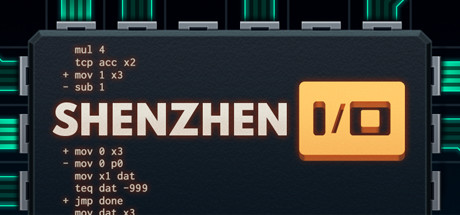
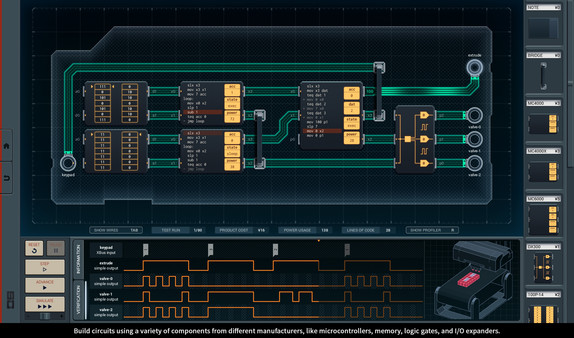
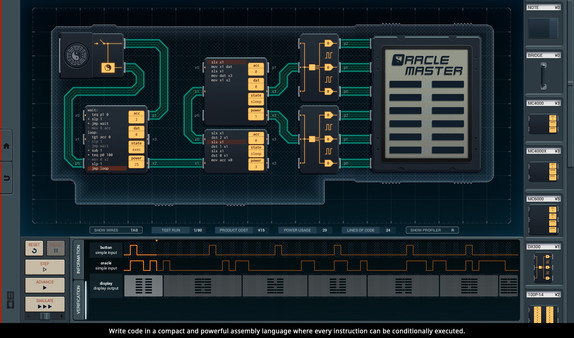
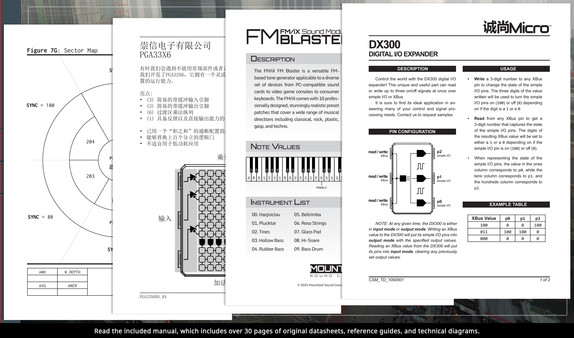
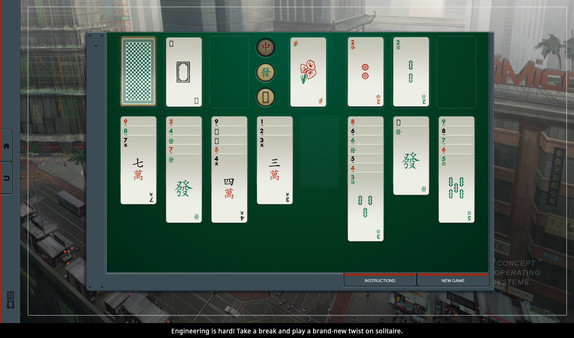
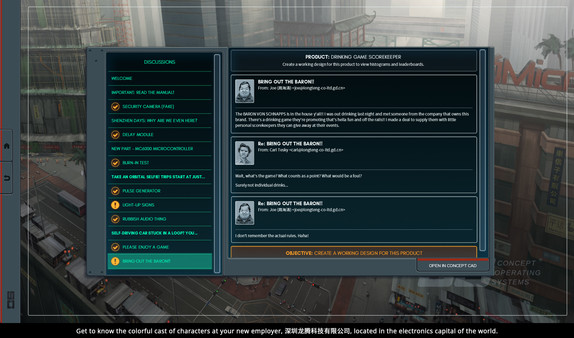
The Developer Says...
BUILD CIRCUITS. WRITE CODE. RTFM.
Keywords
Players Like...
❤ Game Overview
Players step into the shoes of a hardware engineer at a Chinese electronics company, solving increasingly complex challenges by designing circuits and writing assembly-like code.
❤ Circuit Design Mechanics
Engineers place electronic components on a tightly restricted board. Components include microcontrollers with only 1-2 registers, memory units with 9-14 code line limits, logic gates, and simple displays. Solving each puzzle demands creative spatial reasoning and precise logical thinking.
❤ Programming Challenges
Uses a hyper-simplified assembly language that mimics 1980s microcontroller programming. Forces players to write ultra-compact code using jumps, conditions, and minimal instructions. Requires breaking complex problems into minute, executable steps.
❤ Puzzle Structure
Difficulty rises exponentially across increasingly complex tasks. Challenges range from creating simple animated signs to building intricate interactive devices. Multiple solution paths exist for each problem.
❤ Optimization Metrics
Compare player solutions for code efficiency, power consumption, and production costs. Provides instant visual circuit simulation feedback and generates profound satisfaction through incremental problem-solving.
❤ Target Experience
Ideal for professional programmers, puzzle enthusiasts, engineers, and individuals fascinated by computational thinking. Requires substantial mental investment and algorithmic thinking.
❤ Recommended Player Profile
Players who relish solving intricate logical puzzles, optimizing computational solutions, exploring hardware design principles, and experiencing simulated engineering environments.
❤ Conclusion
Transforms low-level programming into an intellectually demanding puzzle experience, challenging players to master computational creativity within extreme limitations.
About | Terms of Service | Privacy Policy
Copyright ©2024 by Totally Human Media
